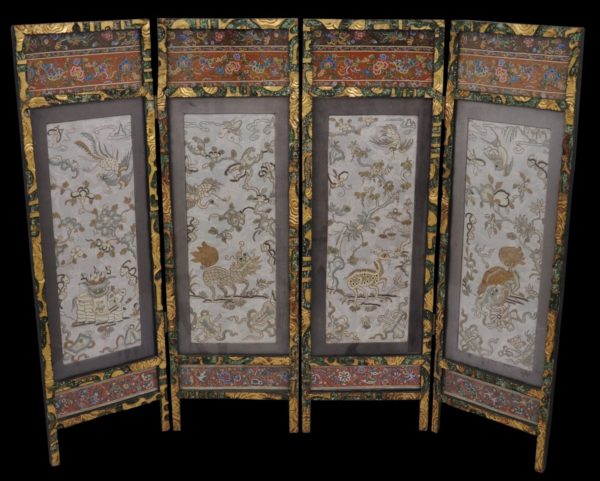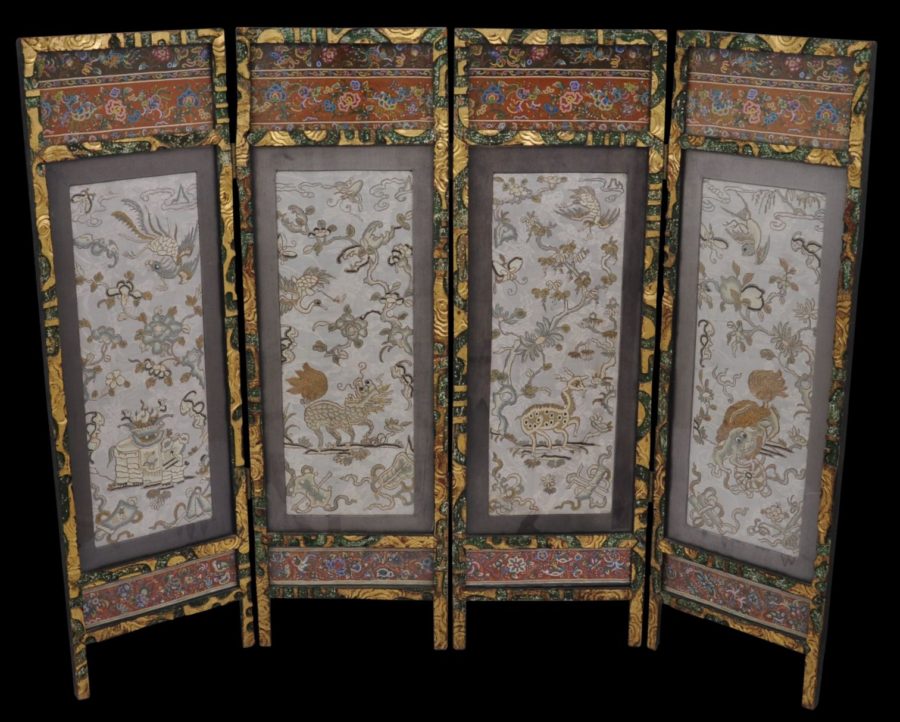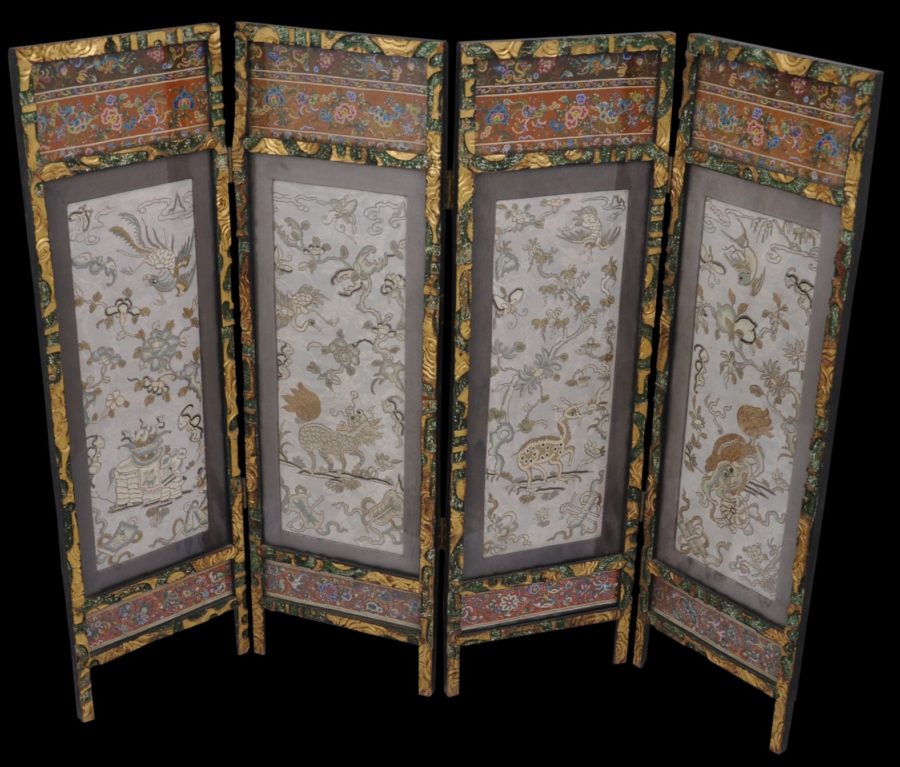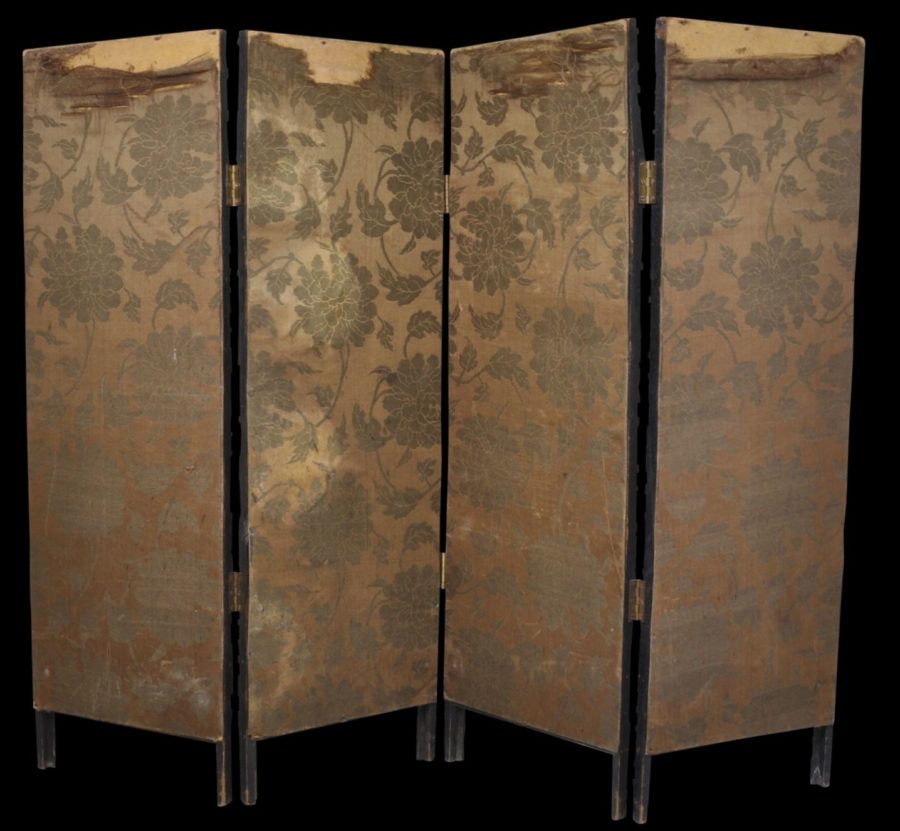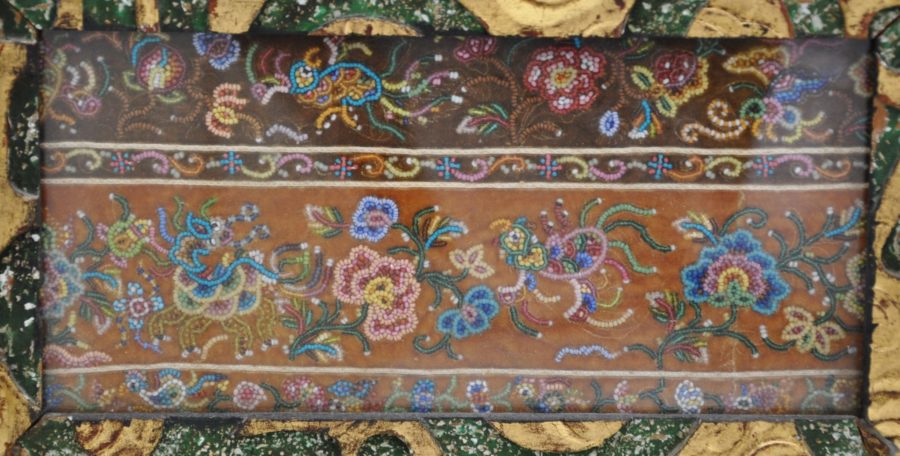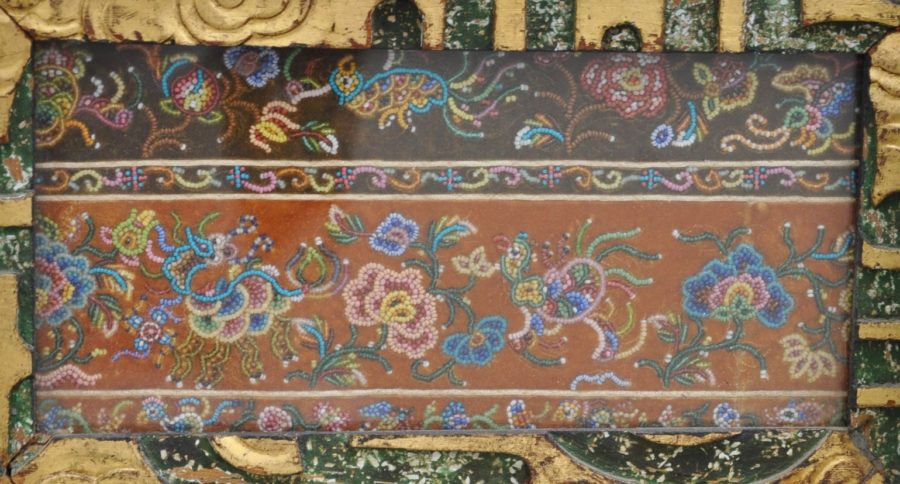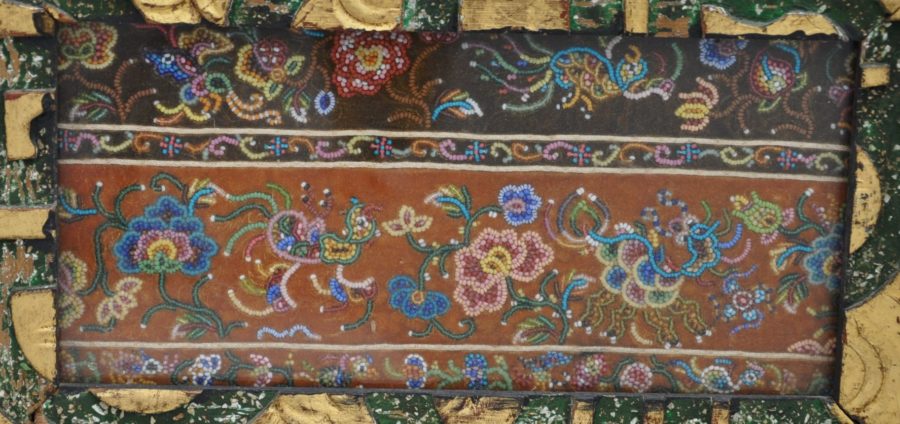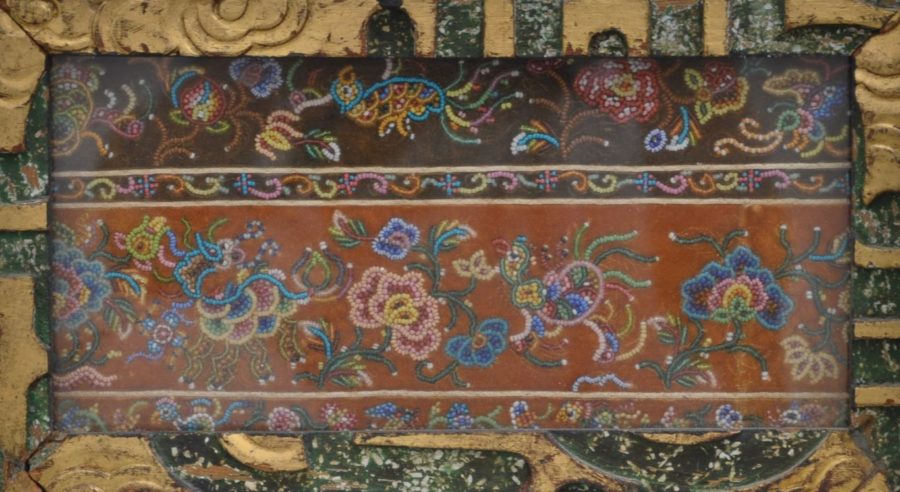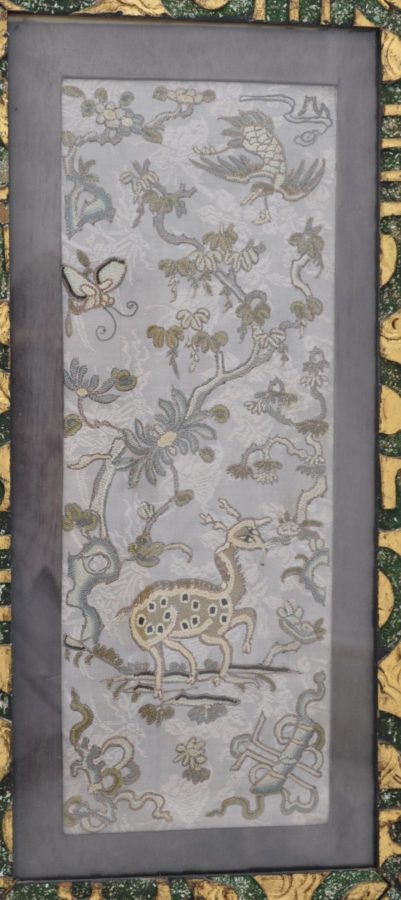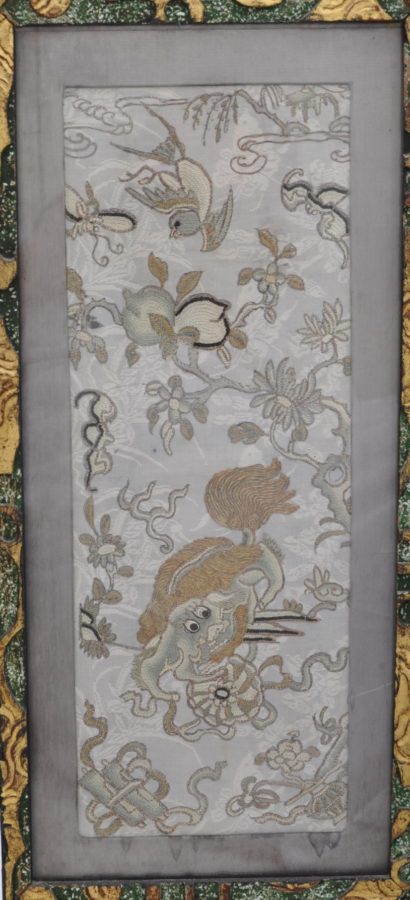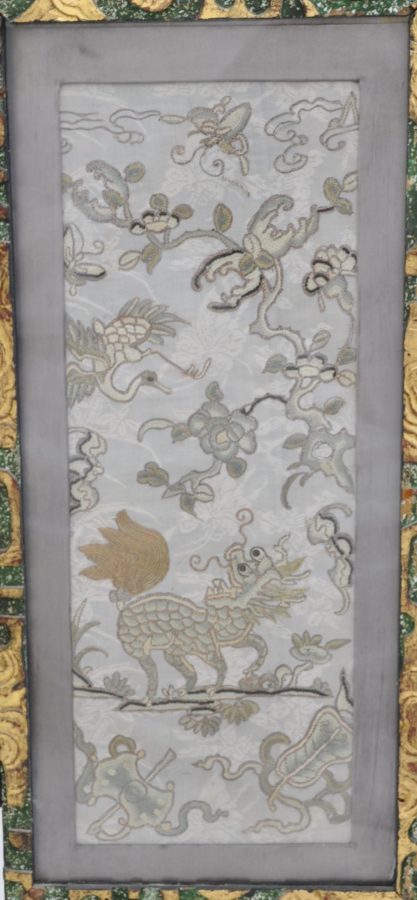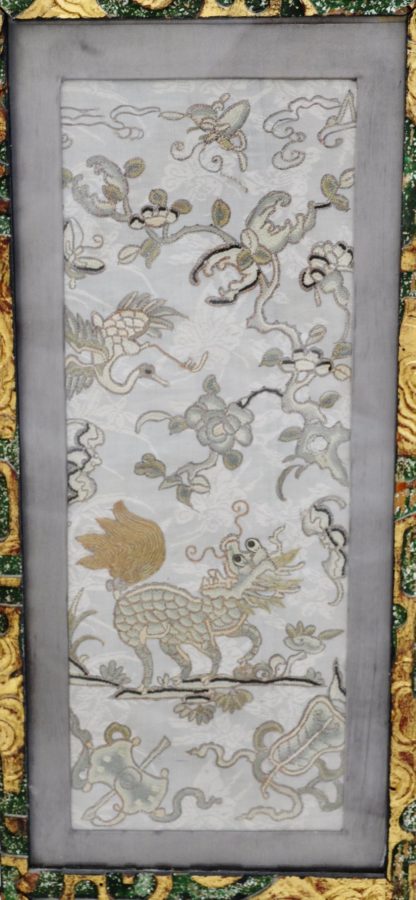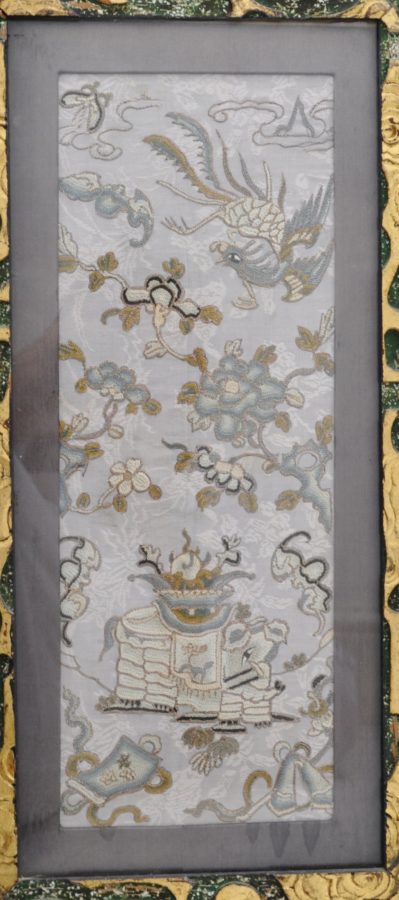This very rare folding table screen is identifiably from the Straits Chinese or Baba-Nonya communities of the Malay Peninsula, and most probably is from Penang.
It features four leaves that stand on two feet each and which are hinged together. Each leaf has three panels – a top and bottom beaded panel, and then a central panel of embroidered silk.
Each panel is under glass.
The wood surrounds are carved in relief with rockery-type motifs. These have been gilded. The ground is green and flecked with mica.
The embroidered panels are on pale-blue grounds and feature mythical creatures surrounded by forest. The work is extremely fine.
The eight beaded panels are against an orange ground and feature in multiple-coloured beads, peonies and what are probably phoenixes.
The reverse of the screen is lined with 19th or early 20th century peony-patterned Chinese silk. Silk is light-sensitive and so as might be expected, there has been some deterioration to this.
Table screens in Straits Chinese houses were known but surviving examples are rare. Cheah (2017, p. 16) illustrates an example that incorporates panels of embroidered silk. Ours is the only example of which we are aware (published or otherwise) which includes Nonya beadwork panels.
Rocaille beads were made in southern France and were widely used in Singapore and the other Straits Settlements for beading slippers, wedding pillow ends, betel set mats and other paraphernalia associated with baba/nonya culture. The Straits Chinese referred to the beads as manek potong (‘cut beads’) and acquired them from street peddlars and specialist merchants for the purpose of beading and embroidery.
Screens were common in China particularly among Manchu households at first. The Manchus had shamanistic beliefs and felt that erecting screen in doorways, atop tables and so on would block the entry of malicious spirits.
The images of the beadwork panels and the embroidery below have been taken through the glass that covers the panels so there is some reflection on account of this.
Each silk and beaded panel is in excellent condition – largely because they have been kept beneath glass for the last 100 or so years.
References
Cheah, H.F, Nyonya Needlework: Embroidery and Beadwork in the Peranakan World, Asian Civilisations Museum, 2017.
Ho, W.M., Straits Chinese Beadwork & Embroidery: A Collector’s Guide, Times Books International, 1987.
Fang, J.P., P. Wang & J. Rutherford, Elegance of the Qing Court: Reflections of a Dynasty through its Art, Joslyn Art Museum, 2008.


